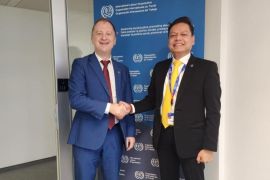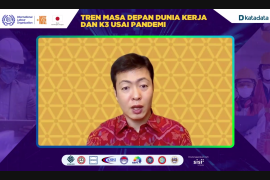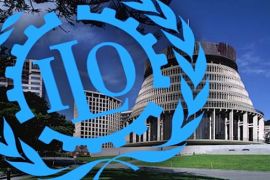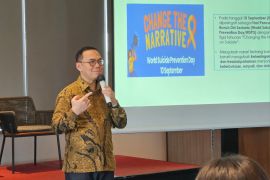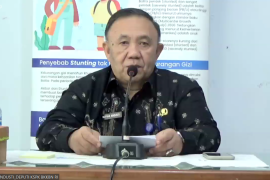Koizumi is the son of charismatic former Japanese prime minister Junichiro Koizumi and viewed as a future leader to succeed Prime Minister Shinzo Abe.
Koizumi announced his decision to take two weeks of leave over a span of three months in a bid to set an example for other men but had struggled as he weighed his responsibilities as a minister against those of a father.
Koizumi's move is the first time that a cabinet minister has taken paternity leave.
Japanese Prime Minister Abe has been striving to encourage more men to take a paternity leave and for businesses to allow a better work-life balance, as part of his “Womenomics” program for bolstering women’s employment.
However, change has been slow. Koizumi’s interest in taking parental leave initially drew criticism from some other lawmakers, who opined that he should prioritize his duty to the public.
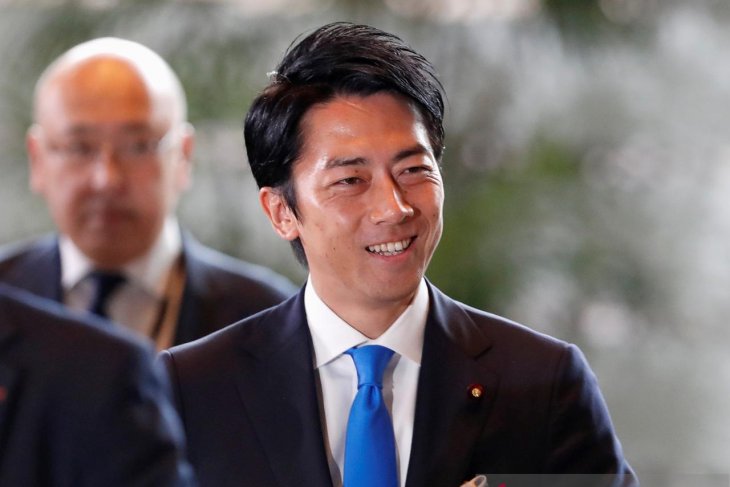
Koizumi admitted to hearing both pro- and anti- comments in connection with his decision.
Koizumi has vowed to continue to give priority to policy and managing anything unexpected that comes up while also carving out time for child care, according to Reuters.
Koizumi intends to incorporate a flexible work schedule by corresponding via emails and video conferencing from home.
In Japan, the childcare leave law only covers employed “workers,” which excludes parliamentarians from an official childcare leave system.
"Data shows that 80 percent of men, upon joining the work force, say they’d like to take paternity leave, but only six percent of them actually go through with it,” he noted in a speech also posted on his website.
“I now understand the reason for this gap... So many other men are facing this same conflict of wanting to take leave but being unable to do so,” he stated.
Japan’s parental leave policies are among the world’s most generous, offering men and women with partially paid leave of up to a year or longer if there is no public child care. Policies are even more accommodating for government workers.
However, few fathers actually utilize the provided leave. Only 6.16 percent of the male employees took paternity leave, as compared to 82.2 percent of working mothers, according to government data.
Even that figure is double the three-percent rate a few years ago though far short of the 13-percent target set by the government for 2020.
Not popular
In Indonesia, paternity leave is still rarely taken by fathers.
According to ILO, paternity leave is generally a short time given to fathers after their children are born.
Paternity leave is also not very popular in Indonesia. Fathers largely prefer to continue to work and would rather pay a babysitter to take care of their children.
In comparison with other countries, the time period given to a father's leave is short. Workers and employees of private companies give only two days leave to fathers according to Labor Law No. 13 of 2003.
However, as compared to maternity leave, which is a right of rest for pregnant women workers, paternity leave is not the right to rest but permission to not work for any reason and still be paid.
In fact, the process of natural birth normally takes three days, while a cesarean section takes about five days at the hospital.
Hence, the two days of leave given to a husband is not sufficient. Several employees extend their time to be by the side of their wives to give birth by taking annual leave.
The statement was delivered by Awaludin, 35, a private worker in Jakarta.
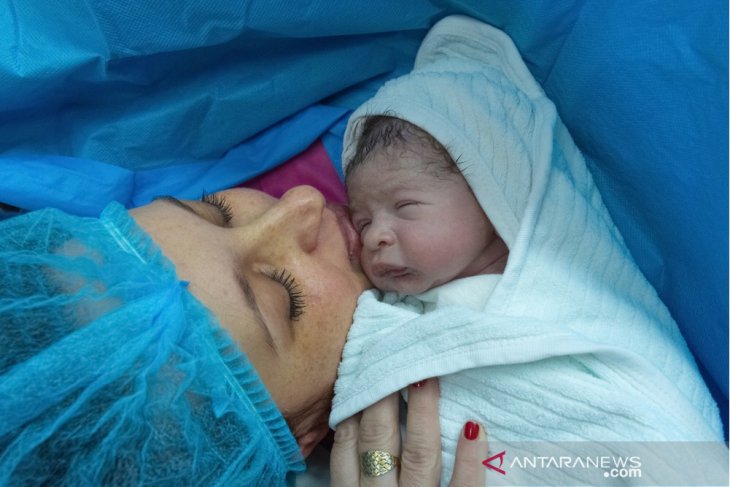
Awaludin noted that all fathers need a paternity leave, especially for those currently accompanying their wives at childbirth.
Hence, the two days of leave is far from sufficient. On the field, the implementation depends on the policies of the company or employer.
He pointed to quite a few incidents of husbands, who did not receive permission to accompany their wives during childbirth.
"I hope the government would give paternity leave for at least two weeks," Awaludin stated.
Meanwhile, Ardiyanto, 30, who works in state-owned enterprises, stated that paternity leave offers fathers an important opportunity to bond with their newborn child.
Paternity leave also allows fathers to become more involved at home. The involvement of fathers in their children’s early days has a positive impact on its development and health, he explained.
Based on ILO's survey conducted in five countries -- Brazil, Chile, Croatia, India, and Mexico -- the vast majority of men think that "it is important for them to play a role in their children’s lives" and that 20-65 percent of men had reportedly taken some leave when their last child was born, indicating the evolving role of men in family responsibilities.
"Heaven" for fathers
Some countries -- Sweden, Finland, Estonia, Iceland, Lithuania, Slovenia, Norway, and Hungary -- have actually moved forward by giving time off for new fathers.
Those countries have made a big leap in giving leave for new fathers, as reported by the World Economic Forum (World Economic Forum / WEF) website.
New parents in Sweden are entitled to 480 days of paid leave, with 80 percent of the normal salary. Fathers receive 90 days of paid special leave. This idea exists to strengthen the bonding between father and son when the mother gets the most attention from the environment.
Fathers in Finland receive eight weeks of paid leave, while mothers are given 23 weeks of leave divided during pregnancy and babysitting.
After children reach three years of age, parents can also take partial care leave, which allows them to divide their time between home and work. The leave lasts until the child reaches the second grade of elementary school.
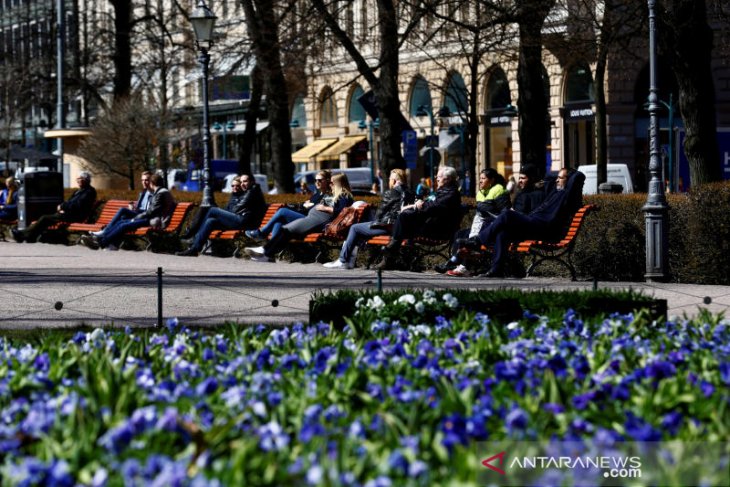
After the maternity leave is over, parents will get an additional 435 days of leave to be shared together, with compensation calculated from the average income of the two of them.
Parents in Iceland can also share leave for nine months following the birth of the baby. The new mother will get three months, the new father will receive three months, and then the distribution of the remaining three months' leave handed to the couple. Each parent receives 80 percent of his’ salary during the leave period.
In Lithuania, fathers take four weeks off and an additional 156 weeks to share. Parents can decide whether to receive 100-percent payment for the first 52 weeks until the child is a year old or 70 percent for the first 104 weeks until the child is two years of age. The rest of the following weeks are unpaid.
Furthermore, fathers in Slovenia are guaranteed 90 days of leave. They will receive 100 percent salary in the first 15 days, while after 75 days, a minimum wage will be paid. The maternity leave lasts for 105 days, including 28 days taken before the estimated day of birth.
Meanwhile, fathers in Hungary get a week of paid leave and 156 weeks to share with the mother after she has taken 24 days leave. During the 104-week leave, they will be paid 70 percent of their salary and a flat rate for the rest of it.
The Norwegian system is flexible and royal. A father can take anywhere from zero to 10 weeks depending on the wife's income, while mothers can take leave for 35 weeks in full pay or 45 weeks with 80-percent salary. Both parents can receive an additional 46 weeks of paid leave or 56 weeks at 80 percent of their salary.
Related news: Empowerment of female workers in Ungaran through Better Work Indonesia
Related news: Mothers have tough but noble tasks: Jokowi
Editor: Sri Haryati
Copyright © ANTARA 2020


